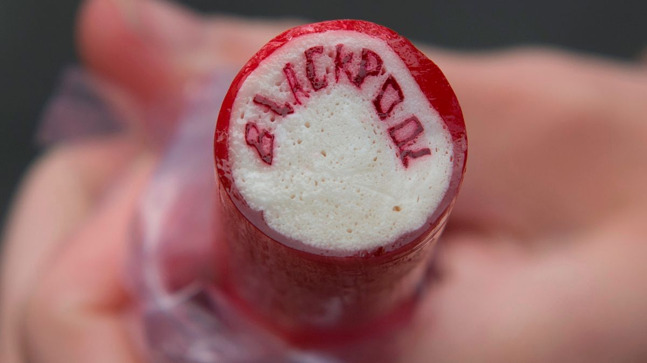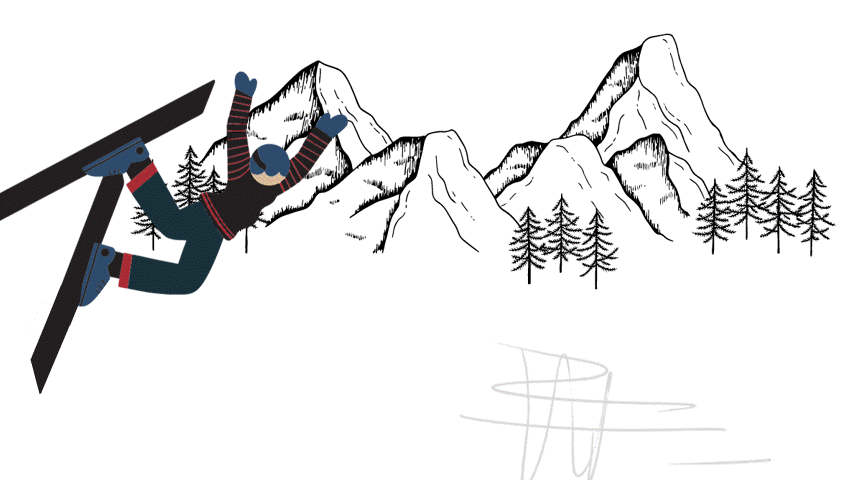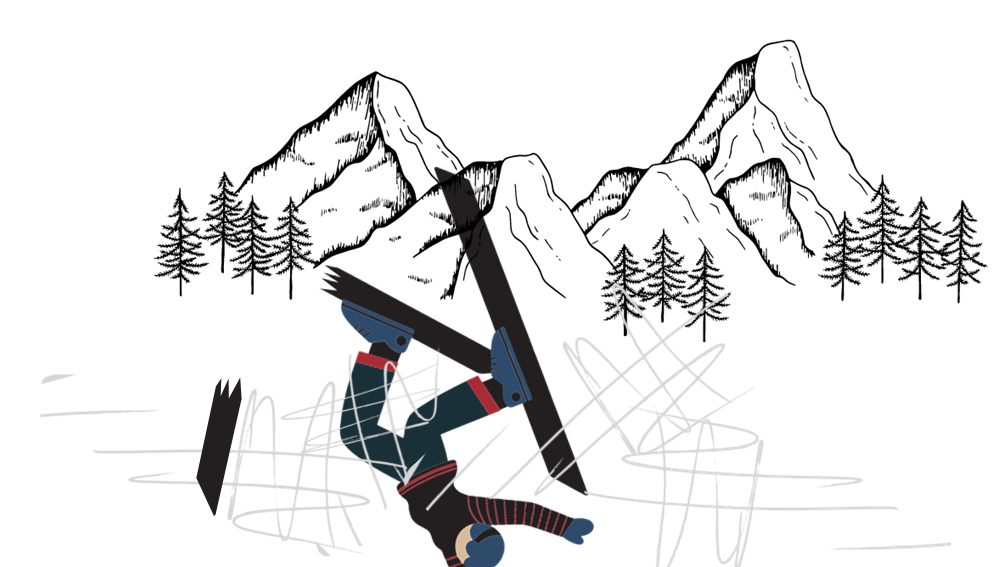
audio
Have a good look at the image on screen, Say what you see….it’s a plain stick of seaside rock.
Moving on to the next image…again, say what you see…this time, it’s a stick of rock, but you know where it’s from – it’s Blackpool. And of course, the clever thing is, that wherever you bite or break into the stick of rock, the name ‘Blackpool’ will still be there. A company with excellent customer service is just like that. Wherever you break into the company as a customer – whoever you are working with, whoever you're talking to, you’ll always get excellent. Just like the rock, the identity of excellence is always there. Always, And, from everyone.
Have a look at this next image, and say what you see…it looks like another stick of rock, but it isn’t. It’s a baton. A relay baton. And excellent customer service is like this. Have a look at the next slide...
Just like with a baton in this image, excellence is passed on, from staff member to staff member, so the customer – as the baton – gets supreme service all the way through their customer journey. Next slide...
Now what do you see… It’s a single, golden thread. Now move on to the final image.
In this image, the circles represent individual staff in the organisation, and the ‘thread’ – the golden line – in the picture represents the customer journey – where the service, and therefore the journey – is golden throughout.
Everything is connected, through excellence…
MAD-Ness
Are you Making enough of A Difference? A positive difference?
audio
When I was 14 I went on a school ski-ing trip. (The photo isn’t me, but it’s about the right age). I was a novice, and started to go down the slope too fast, with no idea of how to stop. Eventually my skis ran into a heap of snow, and I was catapulted over the top, landing face down. A skier came to see if I was alright, and another, close behind, picked up something from the snow. It was the front half of my ski.
In those days, the ski was wooden, and my boot was fastened into a metal clip that was supposed to spring open on any impact. Unfortunately my clasp had frozen solid, and as a result, the ski snapped in two. Here’s the point though. It should have been my shin, or my ankle. Both should have been a weaker link that the wooden ski(with it’s sides riveted to a thin strip of metal.) Fortunately, and pre-figuring Anne Robinson, on this occasion I was not the weakest link…
The moral of the story is this: in terms of customer service excellence, the whole company, and its reputation, rests on its weakest link. Consider the worst service you’ve had as a customer. Which of these two options is your more typical thought: 1) oh well, someone’s just having a bad day, I’m sure they’re great most of the time, and everyone else in the company will be brilliant..or 2) this is a rubbish company… and when, as is likely, you tell friends and relatives about your terrible service, do you say “I had a shocking experience today from someone who works for X’ or “I had a shocking experience today from X”. And the take away message: never be the weakest link…take away this thought. For every customer you interact with, the reputation of the company is resting on YOU! Have a look at the video ‘Mr Smith’ in the 'want more' section and consider how this brilliant customer service example could be ruined by a ‘weakest link’ anywhere in the process….
The Weakest Link...
audio 1
Both case studies present you with a dilemma, each involving a customer whose situation conflicts with other work priorities. What would you do?
For the first case, you are on your way to an important meeting. It starts promptly in 10 minutes, and you are 5 minutes away, on foot. You are introducing the first item on the agenda. You turn a corner, and see a young woman struggling to take a twin buggy, with very young twins on board, up a flight of stairs. You can see the lift is out of order. What do you do?
For the second case, you are at a tenant’s home, completing a repair, and you’ll be finished in 5 minutes. You have a tight schedule, and should leave the job within the next 10 minutes to get to your next appointment on time. However you can see that the tenant, an elderly man, seems agitated. You ask if he is ok, and he bursts into tears. What do you do?
audio 2
Case File suggestions.
For the first case, we suggest you help the woman up the stairs as a priority, and either walk quickly to the meeting, and if you are late, apologise, or perhaps phone ahead. We suggest this because this is world class customer service: the woman needs help, it's not her fault the lifts are out of order, and you are the obvious person to assist. Anything less than helping will not be good for customer service or the company's reputation. And even if you are late, a customer-focused organisation would understand, and bring your item up at the next best opportunity. To put it simply, there is more flexibility in your meeting, than in helping the customer. And you can always make a decision by asking yourself this question: if this were my sister/mother, what would I want the organisation's staff member to do?
For the second case, we suggest you spend immediate time supporting the tenant, using your customer care skills outlined in the relevant pod elsewhere. Then take the action that seems most appropriate (eg contact the support team or a suggested neighbour or relative) and let your scheduler know you might be late to the next job, by how much, and why. And if necessary, stay with the tenant until support arrives. Again suppose this were your mum or dad - what would you want for them? Bear in mind that customer service is also reputation management: in this situation, as in case 1, you have the opportunity not only to help a customer, but to build or wreck your company's reputation.
What would you do?
Listen to audio 1 for the background and context for the case studies.
Read each case, and decide what you would do
… then play audio 2 for our views.
You are on your way to an important meeting…
It starts promptly in 10 minutes, and you are 5 minutes away, on foot.
You are introducing the first item on the agenda.
You turn a corner, and see a young woman struggling to take a twin buggy, with very young twins on board, up a flight of stairs.
You can see the lift is out of order.
… what do you do?
You are at a tenant’s home, completing a repair, and you’ll be finished in 5 minutes.
You have a tight schedule, and should leave the job within the next 10 minutes to get to your next appointment on time.
However you can see that the tenant, an elderly man, seems agitated.
You ask if he is ok, and he bursts into tears.
…what do you do?
audio
So you might think that what you do in your job, typically, is repetitive, and essentially boring. But here are some key points to consider, if you think like that – have a look at the MAD folder. The final tab might surprise you – a picture of The Queen, at one of her garden parties. Apparently 8000 people typically attend, and for everyone who gets to shake hands with the queen, that is often a once in a lifetime highlight. Now look at it from the queen’s point of view. She gets to shake hands thousands of times! And…does she look bored? Never. And to prevent boredom, she may use some of the ideas contained in the rest of the folder.
Because, in simple terms, if you think your job is boring, you need to be MAD – Making A Difference!
But It's A Boring Job...
MINDSET... fundamentally, it’s not the job that’s boring, it’s your attitude to it. See it as boring, and it will be…
ACT as though it’s not; fake it til you make it. And no repeated job can ever be the same – each event is unique, no matter how often you’ve done it.
DO... something different; e.g. find a way of improving it, or changing something – the order, the words you use – be stimulated by creativity, not bored by repetition


want more?...
Chicken Soup for the Soul
Jack Canfield et al
The original collection of inspiring stories, and many of them about world class customer service…
keep reading... open












